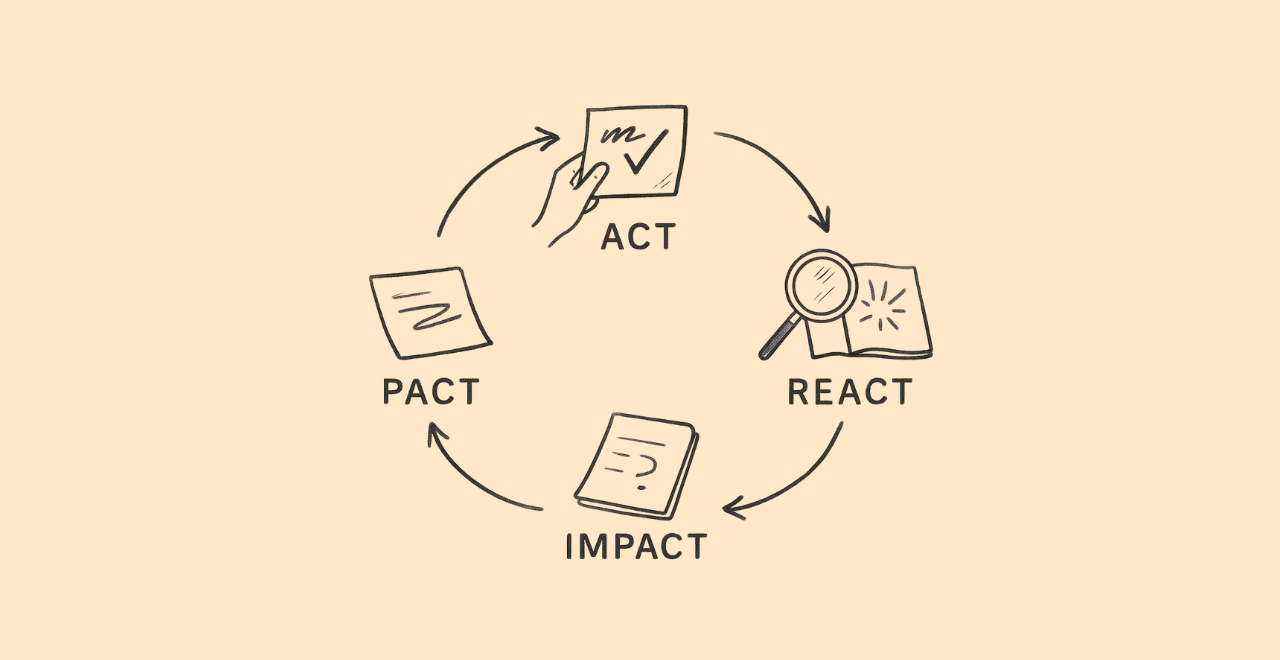Writing is wonderful. Thanks to the generation effect, it helps you better remember what you read – even if it’s just by taking notes – and it’s good for your mental health. Building a writing habit is one of the most powerful things you can do for yourself as a maker.
As Anaïs Nin would say: “We write to taste life twice, in the moment and in retrospect.” Whether you’re trying to make sense of a situation, come up with new ideas, stay consistent with your practices, or reflect on what’s working and what’s not – writing can support you every step of the way.

Writing for Personal Growth
Taking the time to write slows you down just enough to notice what’s going on in your mind, clarify your thoughts, and explore your curiosity with intention. Over time, it becomes not just a record of what you’ve done, but a mirror for how you think. Writing can support:
- Self-authorship. Writing about your experiences is, by definition, an act of self-authorship. You define your voice. You express your beliefs and values. Even when you can’t control external events, you can shape your own narrative.
- Experimentation. By creating space to test ideas, reflect on outcomes, and adapt as you go, writing can help you approach life with curiosity instead of rigidity. That’s why writing is one of the most flexible and reliable tools to develop an experimental mindset.
- Metacognition. Writing helps you step back and think about your thinking. Vague ideas need to become clear in order to be written down. That’s why many people say they don’t fully understand something until they write about it.
- Motivation. It’s easier to stay engaged when you can see and share your progress. Especially if you write and learn in public, it can support accountability and help you maintain momentum.
- Memory: Writing also helps you track what you’ve learned over time. Rereading what you’ve written is a powerful way to spot patterns, rediscover forgotten insights, and reconnect with your “why.”
Writing doesn’t just clarify what you think – it reinforces how you learn, adapt, and evolve. Whether you’re exploring a new idea or reflecting on a past experience, the act of writing turns vague thoughts into tangible insights you can return to and build upon.
A Companion for Tiny Experiments
Personal growth doesn’t have to follow a rigid plan. In fact, systematically trying things out – what I call tiny experiments – can be far more sustainable and rewarding. Writing fits perfectly into this kind of experimental practice and can support you at every stage:
1. PACT: Make a pact with yourself grounded in curiosity. You don’t need a detailed plan, just a simple commitment to explore something that feels alive: “I will [action] for [duration].” Writing it down, whether in a journal, a note to a friend, or a public post, gives form to your intention and creates a gentle incentive for showing up and completing the experiment.
2. ACT: It’s easy to focus solely on execution and forget to capture what’s happening. Writing while you carry out your tiny experiment – such as capturing quick notes or logging thoughts as they emerge – can help you stay connected without the pressure to perform.
3. REACT: Once the experiment is complete, reflection is where learning happens. Writing helps you process the experience and make sense of what worked, what didn’t, and what you might want to try next (for example with the Plus Minus Next method).
4. IMPACT: Over time, your tiny experiments might lead to something bigger. Whether you’re building a product, launching a project, or simply sharing what you’ve learned – writing helps you consolidate your insights and share them with others in a generative way.
Writing helps you stay engaged, deepen your learning, and notice the invisible threads that tie your experiments together. It’s a low-cost, high-value companion for personal experimentation.
It changed my life, and I think it can change yours too. So get a notebook, open a new document, or maybe even start a newsletter. Writing won’t do the growing for you, but it will support, shape, and accelerate your growth in countless ways.
